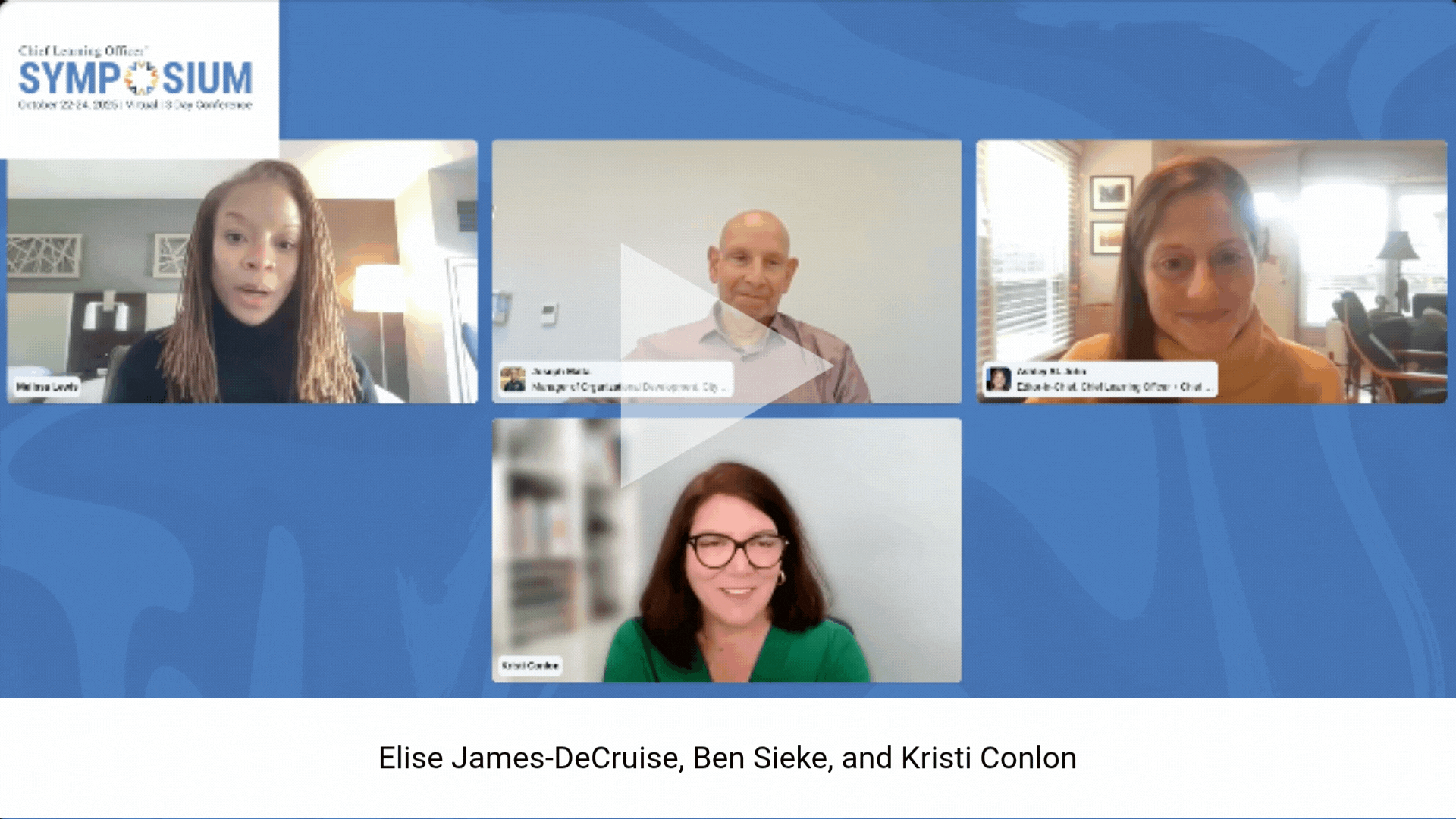Traditional classroom-based instructor-led training remains the most used learning delivery method. According to a survey of the Chief Learning Officer Business Intelligence Board, more than half of learning departments use the classroom for business skills training, developing core competencies, leadership development, onboarding and new hire training, and technical skill development.
But the traditional classroom method by itself is not the best way to learn, at least according to Bob Mosher, a senior partner and chief learning evangelist for consulting firm APPLY Synergies and Chief Learning Officer columnist. Because there are so many ways to gain experience and learn content, Mosher said the classroom can drop content delivery as the reason for its existence and become a place for feedback and remediation. “It can become this rich, wonderful, experiential, safe place where important learning takes place with practice, feedback and support,” Mosher said.
Chief Learning Officer columnist Elliott Masie, CEO of The Masie Center and chair of its Learning Consortium, said learning is best delivered through a mix of modalities. When e-learning first arrived, Masie said the industry thought it was going to replace classroom learning, but it didn’t — it changed it.
In fact, Masie said the amount of classroom training has remained somewhat stable since e-learning became popular. What has changed, he said, is the training’s duration, style and delivery. Most classroom trainings have become shorter and more interactive, experience-based or action-based.
Because the classroom has long been the most used form of training, Mosher said it carried a burden. “It worked OK, but a number of things have caused it to be a bit challenged, if it frankly wasn’t all along,” he said. According to Mosher, the amount and complexity of content reached a point where they overwhelmed the classroom.
But he said technology has freed the classroom of that burden and has created a more independent, demanding learner who doesn’t want to passively sit in a class. “Sometimes those things are misinterpreted as a threat to the classroom, and that’s so wrong,” Mosher said. “It has created a really exciting new opportunity for the classroom.”
The New Classroom
According to Mosher, the days of knowledge dump are over. He said the modern learner doesn’t want to watch endless PowerPoints or sit through long demos and lectures. In fairness to the classroom, Mosher said it’s only like that because of what the classroom was forced to become. When the amount of time allotted for a lesson gets cut from five days to one day, for example, teachers are forced to cram it all in, he said.
“There’s way too much content to teach in way too short of a time,” Mosher said. “We’re always being asked to do it faster. And the trainer gets left holding this ridiculous bag of expectations that may not be possible to meet anymore.”
Mosher said people should use “cheaper, faster and better” modalities like performance support, social networks or e-learning to learn the content so the classroom can become a place of experimentation, trial and error, creative thinking and problem solving instead of information dumping. “If you look at a class now, you see little to none of that in there because there’s so much to cover,” he said.
Masie agreed that the delivery of classroom learning needs to change. “It’s much easier to bring 10 engineers that need to know something about fiber optics together with a really good fiber optic engineer and have them have conversations for five hours than it is to sit down and build a course about fiber optics,” he said.
Mosher added that when you learn the technicalities outside the classroom, they can be enriched with experience, practice, feedback and troubleshooting — all skills a learner must have but may not be able to get elsewhere.
Resistance to Change
Mosher said the L&D industry is hesitant to change the classroom model partly because of fear and pride. “We kind of feel like it’s calling our baby ugly,” Mosher said. “We certify millions of trainers … so our industry gets very defensive with any attack on this front or any perception that the classroom is being changed or reduced in its lengths or positioned differently in the learning landscape.”
Mosher said the idea of relearning how to design the classroom experience is also met with resistance. He said the learning model ADDIE is outdated, which much of the industry is struggling to accept.
Masie agreed that the development models ADDIE and AGILE are for a specific kind of classroom — “a person at the front, lots of PowerPoint, teach it so they memorize it.” But he said learners want something more dynamic and interactive that has more room for failure, is less about memory and is linked to content they can look to afterward.
He also agreed there’s a lot of conservatism about changing the classroom model. “The primary reason is that’s not how they were raised to do it,” he said. “If that’s all they do, it’s hard for people to figure out how to do it differently.”
But Masie said the best way to redesign the classroom is to work with the learners or third parties instead of with traditional classroom instructors. “Learners want content that’s more optimized, more relevant to what they need now,” he said. “Organizations are going to offer three or four styles and they’re going to see that their learners are buying the more interactive, experiential stuff.”
That might not be easy, however, as only 25 percent of respondents to the CLO survey said employees are involved in how learning is delivered to them.
Mosher, on the other hand, leans more on leadership to change the model. If change is going to happen, he thinks it will be because of the vision, determination and courage of L&D leadership to lead that change instead of resisting it, which seems to be the industry norm.
“It’s up to us how fast it will happen,” Mosher said. “It’s happening way faster for those who are seeing this as an opportunity than those who are seeing it as a threat or a change that is going to take too long or be too hard.”
Ave Rio is a Chief Learning Officer associate editor. Comment below or email editor@CLOmedia.com.















